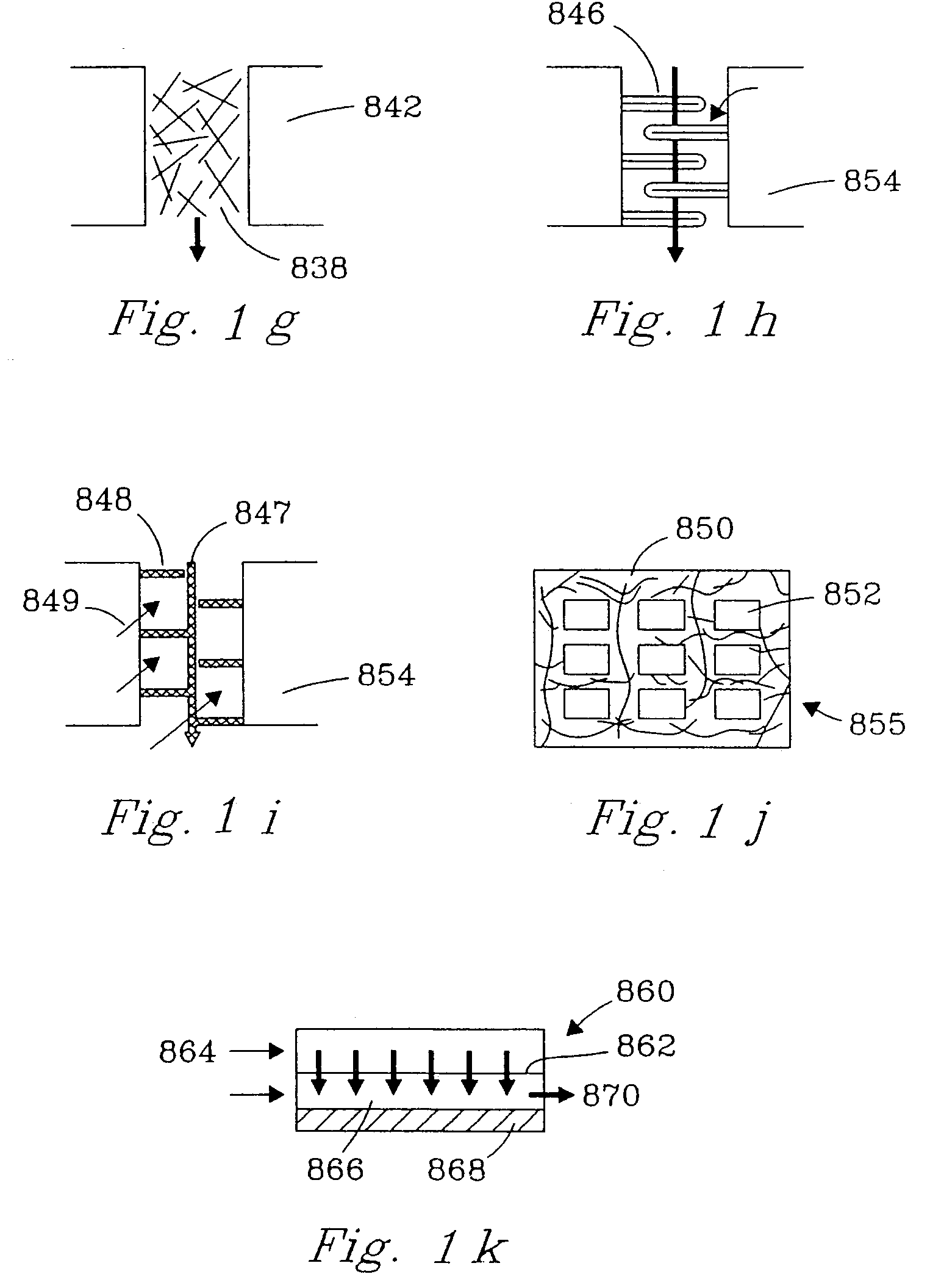Chemical reactor and method for gas phase reactant catalytic reactions
a reaction reaction and reaction method technology, applied in the direction of machines/engines, metal/metal-oxide/metal-hydroxide catalysts, and chemical production of bulk chemicals, can solve the problems of large equipment volume, aluminum application, and large usable surface area of microchannel walls, etc., to achieve short contact time, reduce contact time, and good yield
- Summary
- Abstract
- Description
- Claims
- Application Information
AI Technical Summary
Benefits of technology
Problems solved by technology
Method used
Image
Examples
example 1
[0072]An experiment was conducted to demonstrate the present invention using 1 microchannel for methane steam reforming. The microchannel was placed within a tube furnace to provide the required endothermic reaction heat. The microchannel was 1.52-cm long and 0.66-cm high. The width (or opening) of the microchannel was 0.0762-cm or 762-microns. The 0.0762-cm width included two porous structures that covered opposite walls and each had a width of 254-microns leaving a bulk flow path between the two porous structures of 254 microns. The porous structure contained a catalyst of 13.8%—Rh / 6%—MgO / Al2O3 on a metal felt of FeCrAl alloy obtained from Technetics, Deland, Fla. 13.8 wt % Rh6 wt % MgO / Al2O3 powdered catalyst was prepared by 1) calcining a high surface area gamma-alumina at 500° C. for 5 hours; 2) impregnating the gamma alumina with MgO using the incipient wetness method with an aqueous solution of magnesium nitrate; and obtaining an MgO modified gamma alumina support; 3) drying ...
example 2
[0076]An experiment was conducted utilizing apparatus illustrated in FIG. 7a including a fuel combustor 700, water vaporizer 702, a reactant preheat heat exchanger 704, and a steam-reforming unit 706. The steam reforming unit 706 was constructed with 12 parallel channels (FIG. 7b) 1, 2, 3 . . . 12 each of length 2.79 cm, height 2.54 cm, and width of 750 microns. The porous structure 106 was felt FeCrAl alloy with a porosity ranging from 35% to 90% obtained from Technetics, Orlando, Fla., having a width of about 250 micron. Pieces of metal felt with length and height nearly equal to the channel length and height were coated with the catalyst using the same slurry dipping method and powder catalyst as described in Example 1. These felts were affixed to the walls on opposite sides of the channels leaving a bulk flow path of about 250 microns in each channel. The reactor microchannels were interspersed with heat exchange channels a, b, c . . . m to provide the endothermic reaction heat....
example 3
[0079]Steam reforming experiments were conducted to evaluate the effectiveness of various catalyst configurations within a reaction chamber. Engineered catalysts with various structures were synthesized and activated using the same procedures—as described in Example 1. The felt and ruffle substrates are porous materials formed from FeCrAl alloy fibers, and were purchased from Technetics, Deland, Fla.
[0080]Catalyst was inserted within the single channel device with a snug fit. All catalysts were evaluated in a single channel device. The single channel device is placed in a tube furnace. Reactants were preheated in the top zone of the furnace, and were introduced into the single channel device in a down-flow mode. Steam reforming of methane was conducted at a fixed contact time, a steam-to-carbon ratio of 2 / 1, and a temperature maintained at 850° C. (chamber temperature was continuously monitored by a thermocouple). Effluent flowrate was measured by a bubble flowmeter, and product was...
PUM
| Property | Measurement | Unit |
|---|---|---|
| width | aaaaa | aaaaa |
| height | aaaaa | aaaaa |
| sizes | aaaaa | aaaaa |
Abstract
Description
Claims
Application Information
 Login to View More
Login to View More - R&D
- Intellectual Property
- Life Sciences
- Materials
- Tech Scout
- Unparalleled Data Quality
- Higher Quality Content
- 60% Fewer Hallucinations
Browse by: Latest US Patents, China's latest patents, Technical Efficacy Thesaurus, Application Domain, Technology Topic, Popular Technical Reports.
© 2025 PatSnap. All rights reserved.Legal|Privacy policy|Modern Slavery Act Transparency Statement|Sitemap|About US| Contact US: help@patsnap.com



